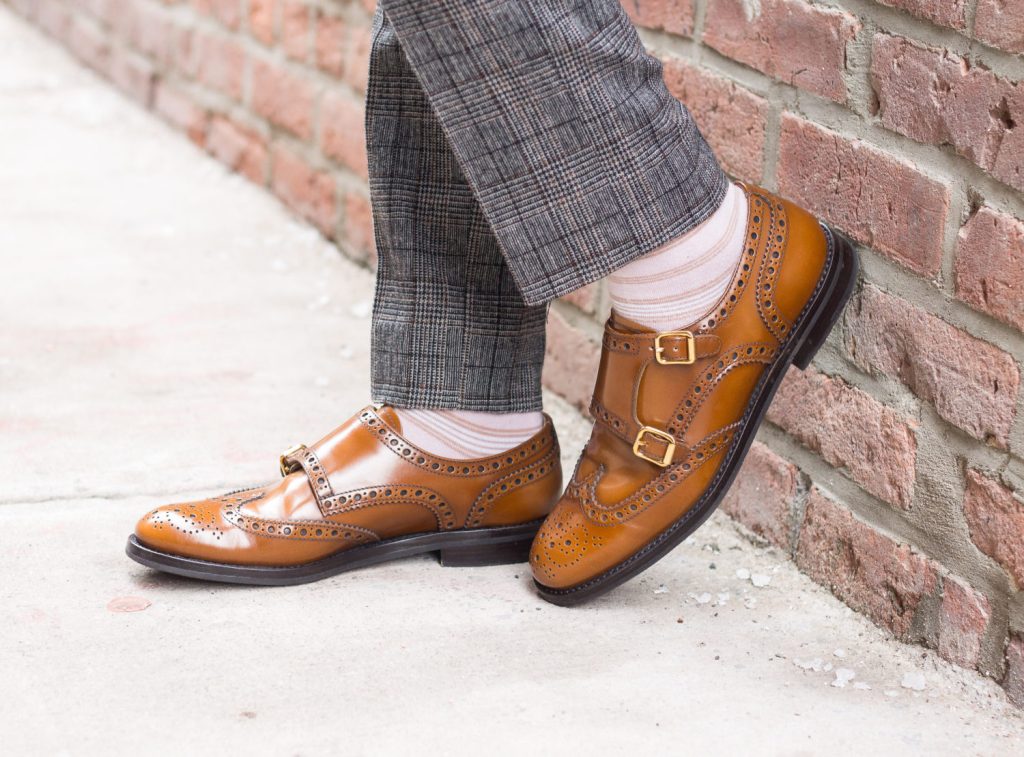The footwear was made from various kinds of high-quality leather. The thick, heavy cowhide leather was used for the simplest shoes, without any decoration which were worn by artisans as well as peasants.
In the Novgorod cultural layer in the 11th-13th centuries, symmetrical footwear for both right and left feet were found with narrow heels or pjatka. The finds also included shoes with patterns such as parallel lines or curly designs.
Shoe Craftsmanship
Archeologists have discovered a variety of pairs (laptiof footwear with various decorations during the excavation of villages from medieval times in Russia’s north-east region. The most common were leather stamping and embroidery. They were the everyday shoes of the peasantry. They were worn with a tightening lace that was swathed around the ankle and a sole attached.
A lapti is a person needs seven pieces of bast that measure two meters. For such strips, it was required to remove the bark from the entire tree of the linden without any defects. This is how the ancient Russians had a metaphorical expression: to strip like the in a linden.
Different regions had different methods of making lapti. For instance, the Moscow ones were a bit high on the ankles, whereas those of the Northern regions were tucked in with pointed toes. Double layers of bast are used to create winter lapti.
The 12th century was when, shoemakers in Novgorod began to embellish their shoes with woolen threads and leather carving. These patterns consisted of a variety of zigzags, crosses, and triangles.
Leather Shoe Manufacturing
Literature has paid little attention to the art of shoemaking during the middle ages of Novgorod. It’s likely that the lack of archeological evidence that we have to study this subject has contributed to the absence of interest.
The bulk of the footwear that is found in Novgorod archeological sites dates back to the 10th-14th centuries. It comprises a range of footwear. The simplest, plainest footwear was made of heavy, dense leather and meant for a broad range of individuals (artisans as well as farmers). For openwork shoes, lighter and softer leathers were used.
Stamped designs across the surface of leather were made by using the techniques of embroidery or carving on leather. They included rows of intersecting or parallel lines, curly lines, and vegetative designs. The most sought-after design for openwork footwear was the stylized flower.
The shoes were also decorated with other embellishments like a pair of eyes, a bow and bow, for instance. The soles were sewn on to the shoe to safeguard the feet.
According to INE figures, manufacturing output in Russia increased in May 2022 when compared to the same month in 2017. The leather and footwear industries witnessed an increase in production giay luoi nam cao cap. The need for safety footwear was the primary driver behind expansion. The Russian company Vostok Servicemanufactures safety shoes at two production sites: Torzhok Shoes Factory>>> ZAO in Torzhok (Tver Region) and WorkingStyle>> OOO in Uzlovaya (Tula Region). Vostok-Service is a distributor authorized by Desma, a German Desma brand. Desma.

Traditional Techniques
The 12th century was Novgorod was a major shoe-making centre. From the time of the time of this the shoes of various types, such as bog shoes (lapti) ankle boots and shoes that had higher sides, reaching to the ankle (porshni) were discovered. They were all made of linden, birch or elm bark. the bast was removed of the bark, and cut into strips to weave.
The saddle stitch or hidden stitch was employed to join the pieces of leather, based on whether they were placed together or next to each other. Butt seams were used to join the upper leather piece with the lower leather piece when it was in contact with it. tachnyi shov, tachnyj shov].
Burki (feather-and-felt boots) constructed from white felt were another form of winter footwear. They were worn by the upper class of people, which included Party chiefs, military commanders generals, government officials and other high-ranking officers.
The 14th century saw the decline of simple and openwork shoes in favor of knee-high boots. These were distinguished by narrower heel sections, small openings for threading laces, and cuts or holes in the bootlegs to accommodate decorative leather straps. The cultural layer in Novgorod has these types of shoes, which were tied at the ankle by using lacing made of leather.
Modern Innovation
VV: I think the sneaker culture in Russia is still pretty young. However, I think it’s growing gradually and the market is growing larger every day. It’s not like it was in the 1990s, when sneakers were available only to a small number of Moscow and Saint Petersburg residents who could afford foreign brands.
In the present the Russian footwear industry tries to adapt to the latest fashions and techniques by integrating these into its own manufacturing processes. Obuv Rossii, for example, developed an automated system to make flip-flops and clogs that incorporate EVA technology. It is based on solid. This is one of the most sophisticated technology in its field.
The use of novel materials is also being evaluated by shoemakers. They are also implementing the most recent IT methods to boost the number of customers who are omnichannel and to increase customer loyalty with a variety of other services.
In the near future, the company will unveil and develop new shoe collections for children and women. Shoes will come with shoes, bags that match as well as shoe care products and socks. All these enhancements are expected to help increase sales, encourage more complex purchases, and increase the loyalty of customers.
